






 |
|||||||
 |
 |
 |
 |
 |
|||
 |
|||||||
|
Alan Eaton Single Ended Type 45 Amplifier Readers of this site know that I’m a big fan of the 45 tube. I really do think that the venerable Type 45, especially in the old globes from the 1930’s, are the pinnacle of single ended sound, at least as far as I have yet experienced it. There is something about the 45; it’s got finesse, drive, and a sense of realism that, if you are serious about this hobby, just has to be experienced on the right speakers. Like the 300B, the 45 is an enduring classic. My long running favorite 45 amplifier has been the incredible Yamamoto A08, an amazing amp on so many levels. But as the Eagles would say “there’s a new kid in town”, and things have changed a bit in my world. Enter Alan Eaton’s 45. Alan has been at the tube business for a long time. He’s built a lot of amplifiers over the past several decades, and has found his sweet spot with the single ended Type 45. These days he is pretty much exclusively using the old Tamura/Tamradio iron that I also have a great admiration for. After hearing Alan’s 300B amplifiers, I decided to check out his personal favorite, so I picked up one of his 45 creations from eBay where he sells his work under the moniker eclectic_electrics. I am not disappointed! Alan’s amp takes so much of what I enjoy in the 45 and even dials it up a notch. Right off the bat Alan’s amp has drive and pulse that makes my program material sparkle, and Alan’s amp even has a bit more gain than I am used to in the 45 tube. Although the amp has high-quality built in volume controls, one for each channel, I’ve spent the most time driving this beauty with passive preamplifiers, first with the Luminous Audio Axiom 2 with the Walker mod, and later with the amazingly fine Audio Music TVC. In both cases, in back to back comparison to the Yamamoto, Alan’s amp seems to have half again as much power. The sound staging and warmth are very similar between the two, but the Yamamoto just felt slower and a bit less “in the room” than Alan’s creation. I love the Yamamoto, and it has been my high water mark for years now, but it has moved on to a new owner. I was surprised, and it took some soul searching, but sonically I just prefer this comparatively modest little amplifier. From a build perspective, this is a well made no frills amplifier, but not in the league of the venerable Yamamoto (but what really is?). Alan’s build is very clean, there are no extraneous screws or marks on the top plate, the tube layout is open and everything has plenty of room. The crinkle black paint on the chassis is durable and looks industrial cool. Alan painted the power transformer to match the vintage UTC chokes (which are superb quality), and overall this looks a bit like a piece of equipment the WW2 era US Navy might have had below decks. I like it! Alan’s circuit is driven by the 6SN7, a solid performer if ever there was one. The rectifier is a 6AX5, also a good solid choice, but not one with a lot of tube rolling possibilities. The 6SN7 provides plenty of that though, almost endless if your wallet is up to the challenge. And of course this will run any vintage or modern 45 tube, of which there are certainly plenty to choose from. So far I’ve used this with a variety of older tubes, as well as Sophia’s “mesh” plate 45 globes. I have yet to find a combination that has not sounded delicious. It's safe to say that I am a fan of Alan Eaton’s amplifier builds. His 300B is probably the best I’ve heard so far, and this little 45 knocked out my beloved Yamamoto, so what can I say? Alan is a pretty prolific builder, with what seems like an amp or two a month. He assures me that he has a good stock of the 1960’s Sony Tamura transformer sets on hand, so should be plenty more of these beauties coming along in the future. Highly recommended if you have the speakers for 1.5 watts of audio bliss. Update Summer 2020: After half a year of owning Alan’s 45 amplifier, I have to say it has a quality of sound that is remarkable and that I have never achieved in the 45 before. It has more perceived volume than any 1.5 watt amplifier I have owned, regardless of tube type, and alongside the 4 watt Yamamoto 2A3 I really cant tell any difference in volume or drive. If anything Alan’s 45 sounds more dynamic. With such a large stock of 45 globes on hand, and the fact that Alan’s amp runs the readily available 6SN7 driver, this is an amp I think I will keep for the duration. Alan credits the 1960’s Tamura iron for the sound quality, but I suspect some modesty is in play there and that Alan himself is the biggest part of his amplifier’s amazing fidelity. Super highly recommended. |
||||||||
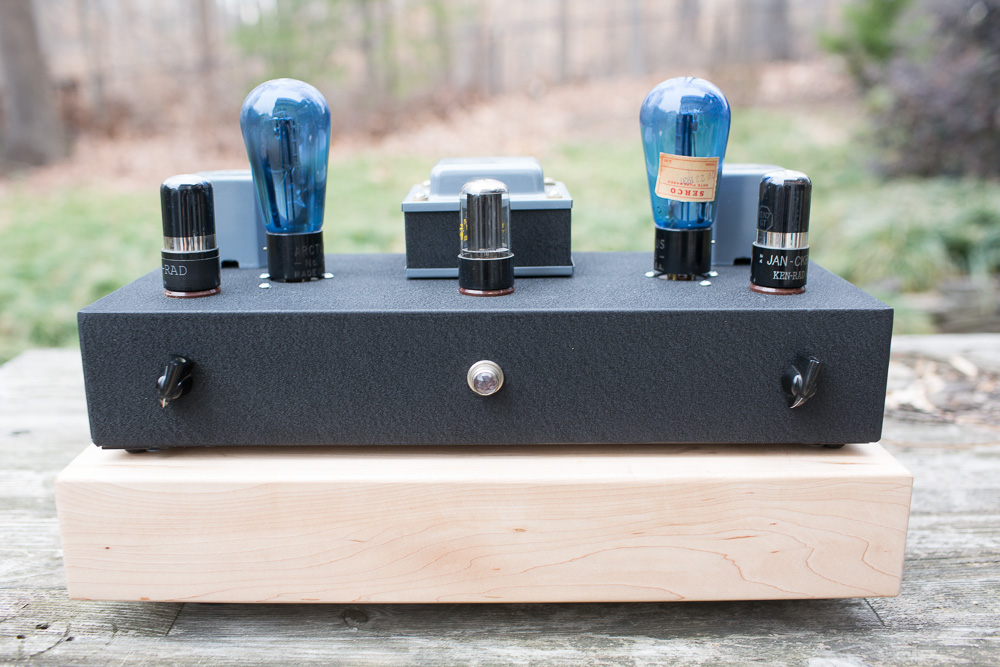
|
||||||||
|
Very clean lines on this 45 amplifier. Nothing extraneous, just simplicity and functional elegance. Alan’s amps tend to be this way and I think it says a lot about his style. The underside is just as clean and neat. |
||||||||

|
||||||||

|
||||||||

|
||||||||

|
||||||||
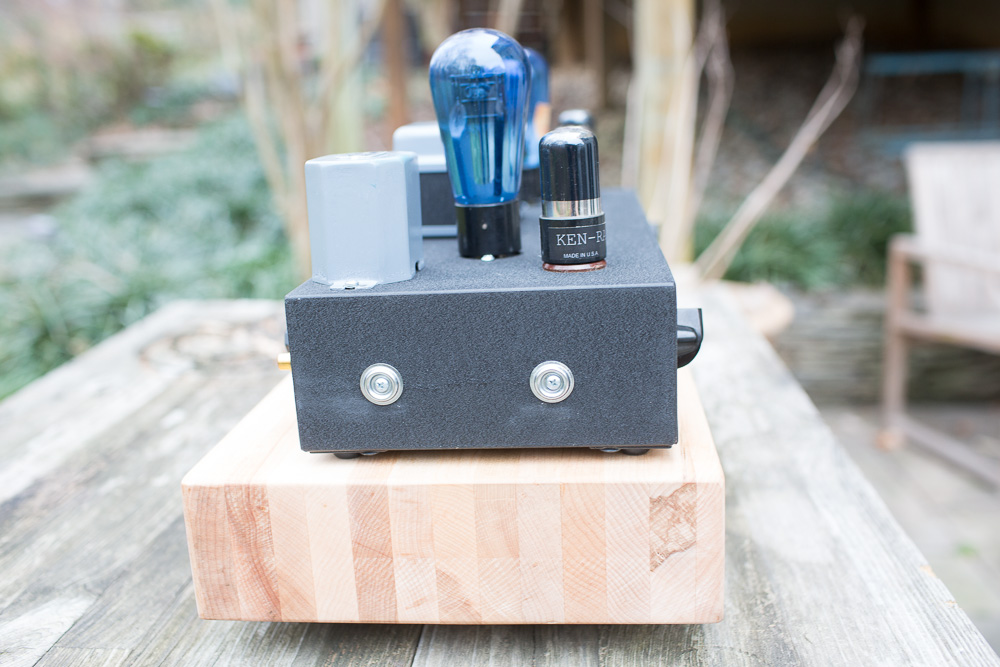
|
||||||||

|
||||||||
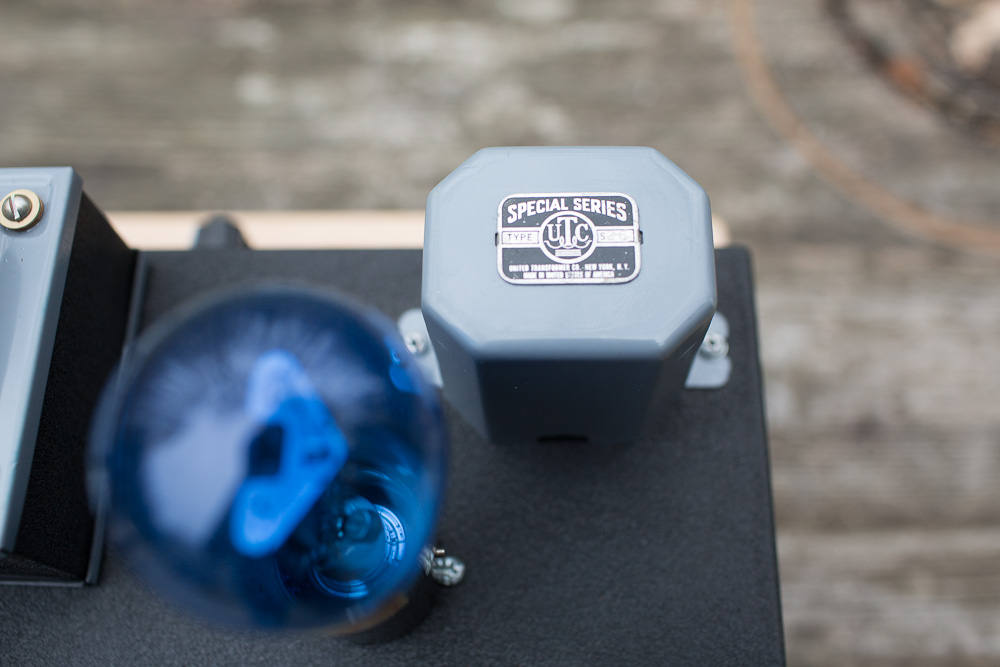
|
||||||||
|
The vintage UTC chokes used here are of the highest quality. Like the Will Vincent 801a, this amp is the epitome of what I think an ideal tube amplifier would be; a newly built creation using mostly vintage parts and running a nearly 100 year old output tube. |
||||||||
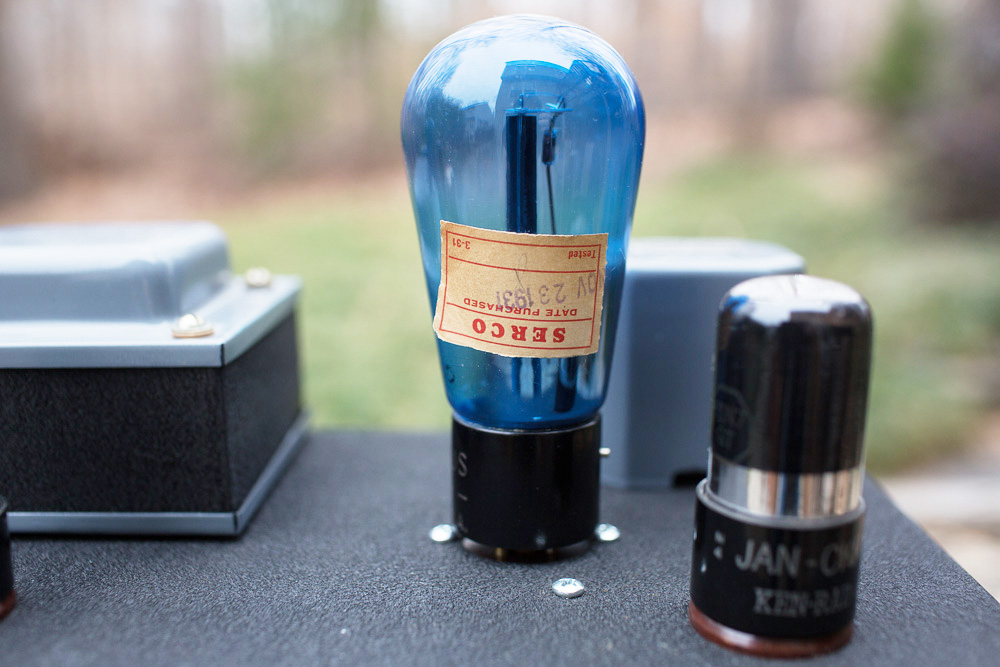
|
||||||||
|
The blue glass Arcturus Type 45 globes are really something special. I almost never see these for sale, and had to patiently wait and buy mine as singles. If you can find them, they do have a great sound, and the 1920's/1930's blue glass marketing still works today as is evidenced by so many new "blue glass" premium tubes that have entered the marketplace over the past few years. Imagine paying a premium for these back in 1931, when you were just going to stick them into the depths of some console radio and never even see them again. |
||||||||
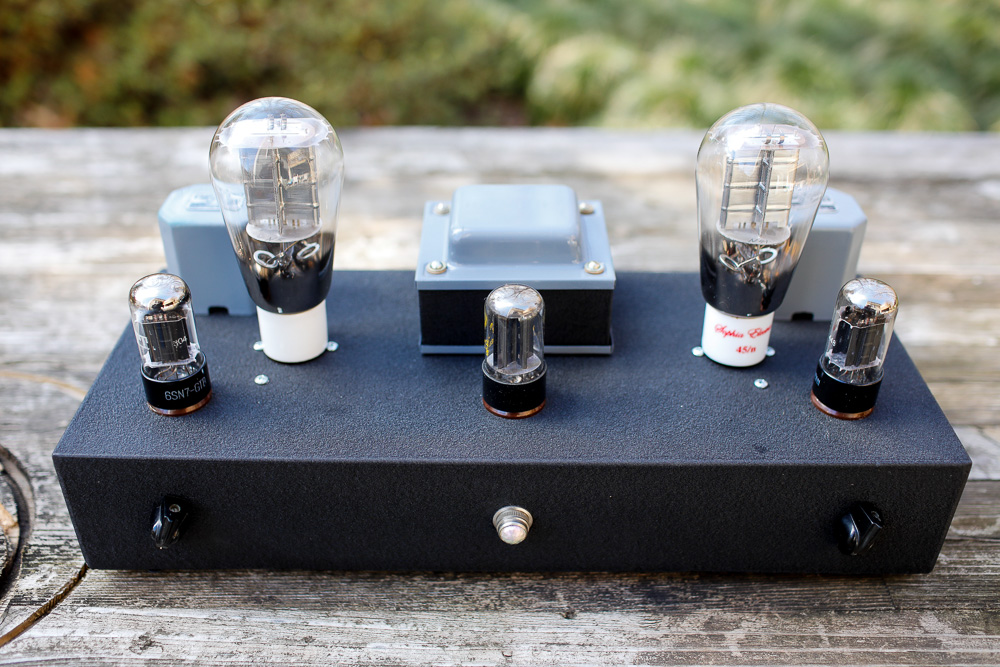
|
||||||||
|
Here is Alan’s amp with the modern Sophia mesh plate globes. |
||||||||
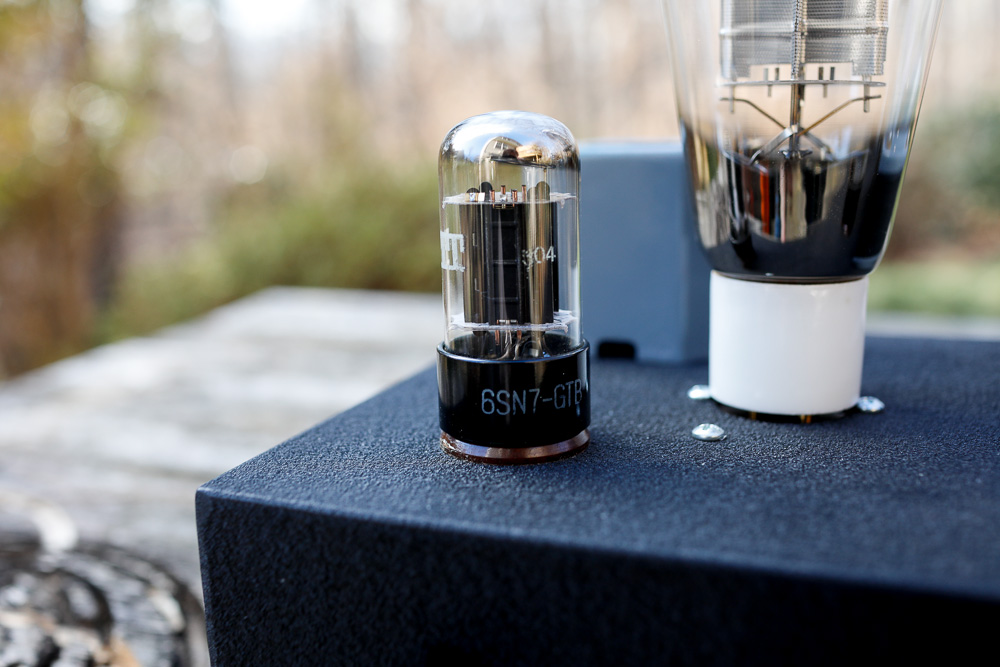
|
||||||||
|
The Hitachi 6SN7 are always one of my favorites. These tubes are real sleepers and compare favorably with the more famous (and expensive) Sylvania Bad Boys and the smoked glass RCA. |
||||||||
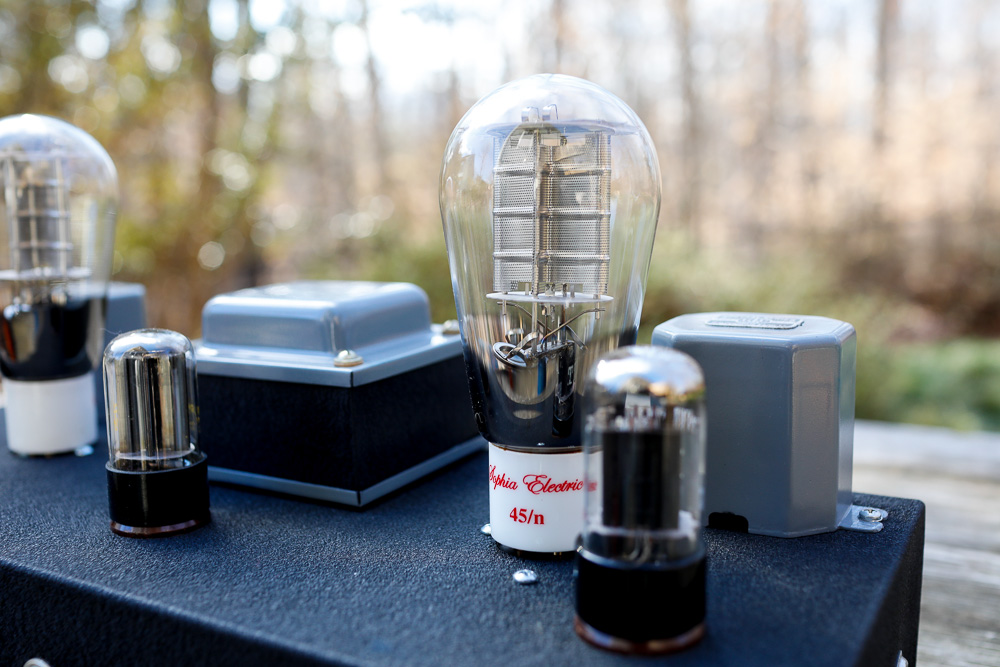
|
||||||||
|
Sophia's mesh plate 45 are one of the best sounding 45 tubes I’ve ever heard. Although they are on the expensive side, these are the daily drivers used on any 45 amp I own for the simple fact that I want to spare the "special" NOS globes like the Arcturus or the Speed tubes. I can buy a replacement set of the Sophia's tomorrow, but unless I can find a time machine, I may never see another good testing pair of the blue glass Arcturus again in my lifetime. |
||||||||
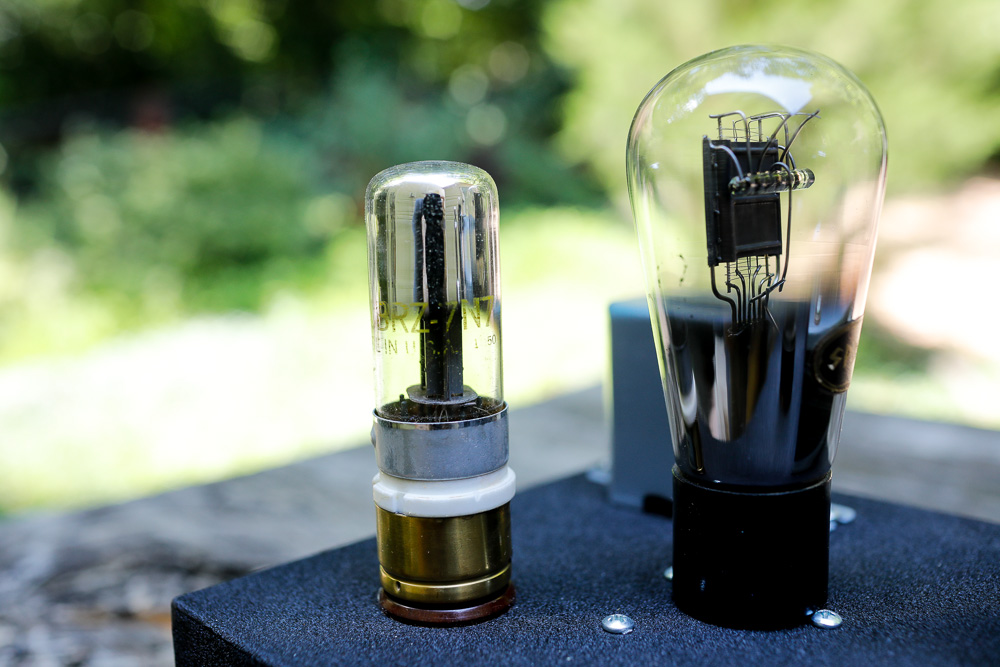
|
||||||||
|
Here is a tip that’s worth the price of admission; the 7N7 tube. This tube type dates to the early 1940s and is electrically identical to the early 6SN7 (but not the later uprated 6SN7GT), but in a Loktal base rather than the Octal base of the 6SN7. Most of the 7N7 out there seem to be made by Sylvania, probably because Sylvania invented the Loktal base, which had a short life span in the marketplace. At any rate, these are superb tubes but do require a pin adapter as pictured. If you are familiar with the most famous and desirable (and expensive!) of the 6SN7 tubes, the early 50’s Sylvania “Chrome Dome” and 1940’s 6SN7W have probably caught your attention, and pictured here is probably the same tube in a Loktal base. Its likely that these rolled off the same factory floor but on a different shift for the different base. Another factor here in favor of the 7N7 are the metal bases, much better at shielding than the plastic bases used in the consumer 6SN7. The earliest 6SN7W also had a metal base, one of the only 6SN7 that featured a metal band, and those sell for several hundred dollars each now; one of the rarest and most sought after of the tube type. To my knowledge all of the 7N7 had metal bases. The average NOS 7N7 can be had for $10 or even less if you aren’t concerned about cosmetics. These taller glass tubes are rarer, but still available for $25 or so each new in their boxes from 1951. |
||||||||
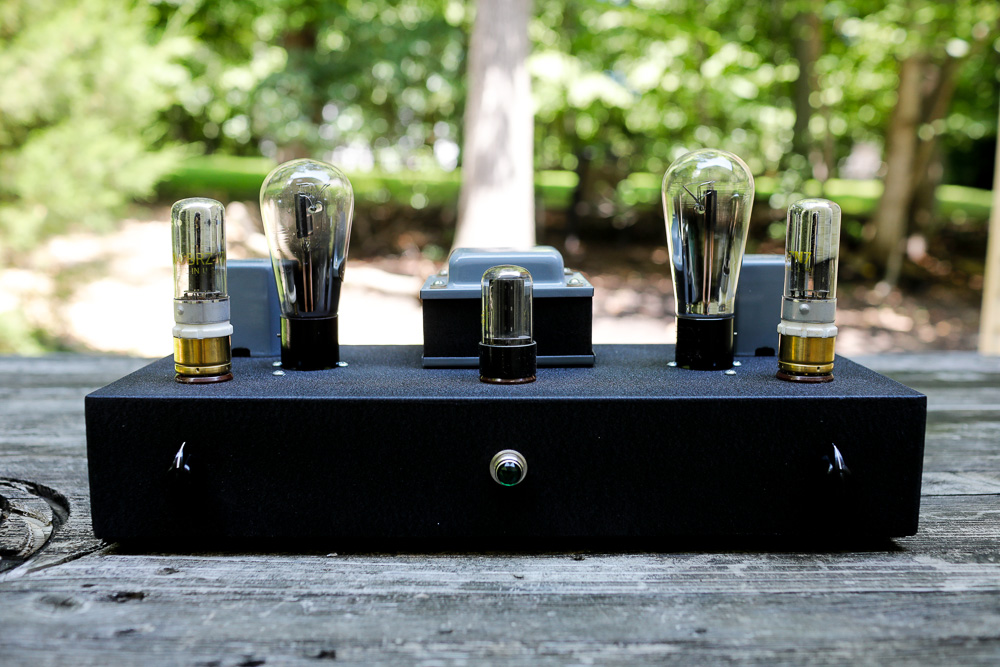
|
||||||||

|
||||||||
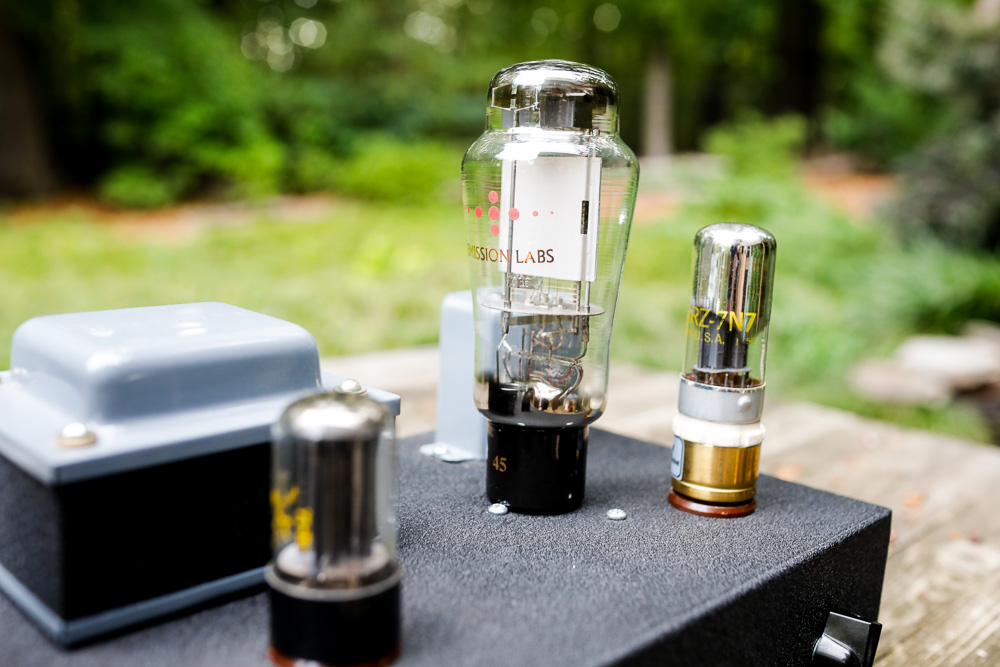
|
||||||||
|
The amazing Emission Labs solid plate 45 are incredible tubes by anyone’s measure. These give the old 1930's globes a run for their money for sure. |
||||||||
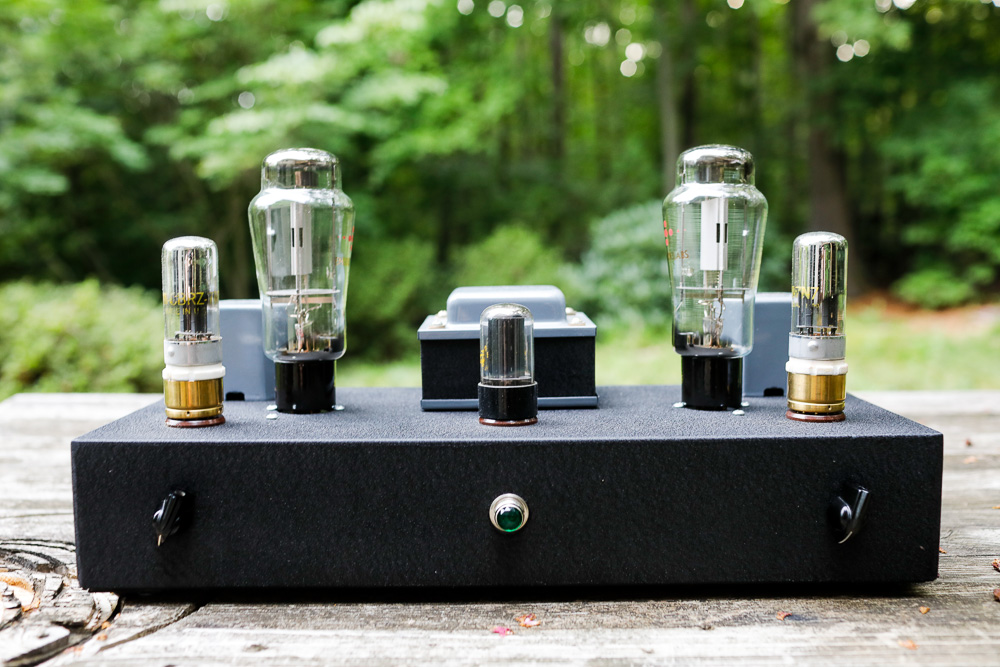
|
 |
|||||||
 |
 |
 |
 |
 |
|||
 |
|||||||
 |
|||||||